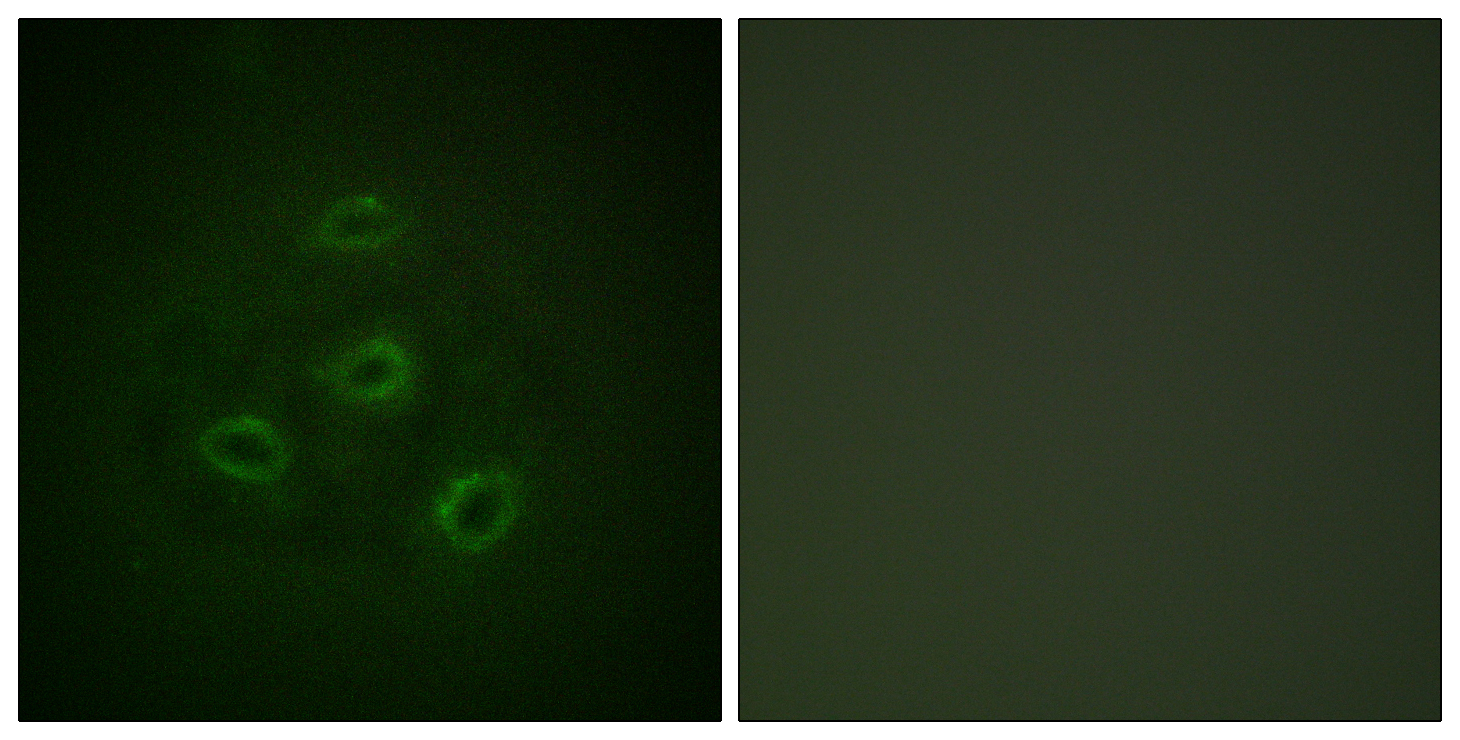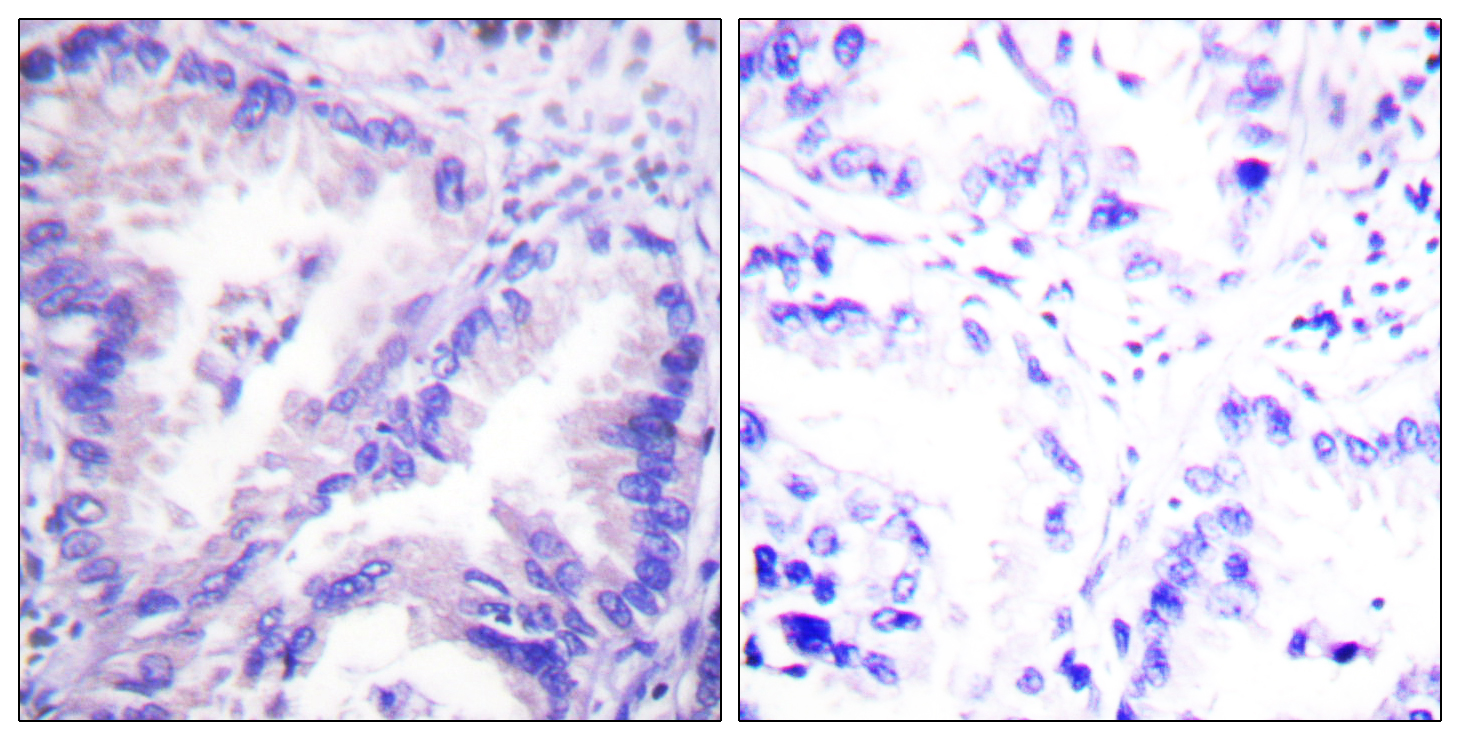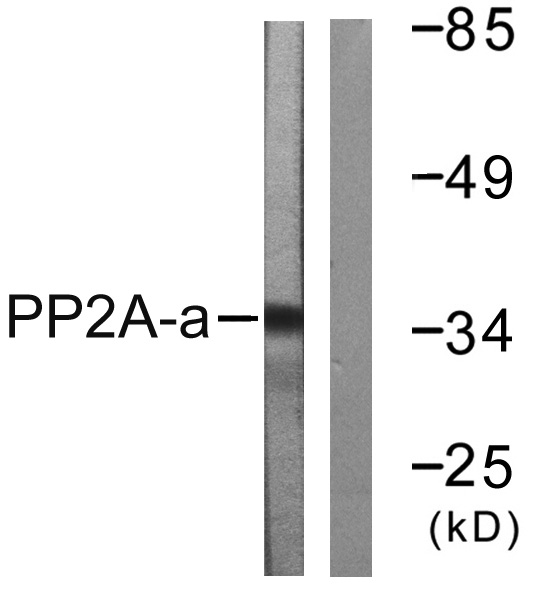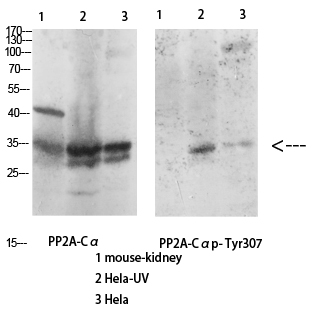产品名称
PP2A-Cα Rabbit Polyclonal Antibody
别名
PPP2CA; Serine/threonine-protein phosphatase 2A catalytic subunit alpha isoform; PP2A-alpha; Replication protein C; RP-C
蛋白名称
Serine/threonine-protein phosphatase 2A catalytic subunit alpha isoform
存储缓冲液
Liquid in PBS containing 50% glycerol, 0.5% BSA and 0.02% New type preservative N.
Human Gene Link
http://www.ncbi.nlm.nih.gov/sites/entrez?db=gene&term=5515
Human Swissprot No.
P67775
Human Swissprot Link
http://www.uniprot.org/uniprotkb/P67775/entry
Mouse Gene Link
http://www.ncbi.nlm.nih.gov/sites/entrez?db=gene&term=19052
Mouse Swissprot No.
P63330
Mouse Swissprot Link
http://www.uniprot.org/uniprot/P63330
Rat Gene Link
http://www.ncbi.nlm.nih.gov/sites/entrez?db=gene&term=24672
Rat Swissprot Link
http://www.uniprot.org/uniprot/P63331
免疫原
The antiserum was produced against synthesized peptide derived from human PP2A-alpha. AA range:260-309
特异性
PP2A-Cα Polyclonal Antibody detects endogenous levels of PP2A-Cα protein.
稀释度
WB 1:500 - 1:2000. IHC 1:100 - 1:300. IF 1:200 - 1:1000. ELISA: 1:5000. Not yet tested in other applications.
宿主
Polyclonal, Rabbit,IgG
背景介绍
This gene encodes the phosphatase 2A catalytic subunit. Protein phosphatase 2A is one of the four major Ser/Thr phosphatases, and it is implicated in the negative control of cell growth and division. It consists of a common heteromeric core enzyme, which is composed of a catalytic subunit and a constant regulatory subunit, that associates with a variety of regulatory subunits. This gene encodes an alpha isoform of the catalytic subunit. [provided by RefSeq, Jul 2008],
组织表达
Fibroblast,Liver,Lung,Placenta,Testis,Uterus,
细胞定位
Cytoplasm . Nucleus . Chromosome, centromere . Cytoplasm, cytoskeleton, spindle pole . In prometaphase cells, but not in anaphase cells, localizes at centromeres (PubMed:16541025). During mitosis, also found at spindle poles (PubMed:16541025). Centromeric localization requires the presence of SGO2 (By similarity). .
信号通路
Oocyte meiosis;WNT;WNT-T CELLTGF-beta;Tight junction;Long-term depression;
功能
catalytic activity:A phosphoprotein + H(2)O = a protein + phosphate.,cofactor:Binds 1 iron ion per subunit.,cofactor:Binds 1 manganese ion per subunit.,function:PP2A can modulate the activity of phosphorylase B kinase casein kinase 2, mitogen-stimulated S6 kinase, and MAP-2 kinase. Can dephosphorylate SV40 large T antigen and p53. Dephosphorylates SV40 large T antigen, preferentially on serine residues 120, 123, 677, and perhaps 679. The C subunit was most active, followed by the AC form, which was more active than the ABC form, and activity of all three forms was strongly stimulated by manganese, and to a lesser extent by magnesium. Dephosphorylation by the AC form, but not C or ABC form is inhibited by small T antigen.,PTM:Phosphorylation of either threonine (by autophosphorylation-activated protein kinase) or tyrosine results in inactivation of the phosphatase. Auto-dephosphorylation has been suggested as a mechanism for reactivation.,PTM:Reversibly methyl esterified on Leu-309. Carboxyl methylation may play a role in holoenzyme assembly. It varies during the cell cycle.,similarity:Belongs to the PPP phosphatase family.,similarity:Belongs to the PPP phosphatase family. PP-1 subfamily.,subcellular location:In prometaphase cells, but not in anaphase cells, localizes at centromeres. During mitosis, also found at spindle poles.,subunit:PP2A consists of a common heterodimeric core enzyme, composed of a 36 kDa catalytic subunit (subunit C) and a 65 kDa constant regulatory subunit (PR65 or subunit A), that associates with a variety of regulatory subunits. Proteins that associate with the core dimer include three families of regulatory subunits B (the R2/B/PR55/B55, R3/B''/PR72/PR130/PR59 and R5/B'/B56 families), the 48 kDa variable regulatory subunit, viral proteins, and cell signaling molecules. Interacts with NXN; the interaction is direct (By similarity). May indirectly interact with SGOL1, most probably through regulatory B56 subunits.,
纯化
The antibody was affinity-purified from rabbit antiserum by affinity-chromatography using epitope-specific immunogen.




.jpg)

